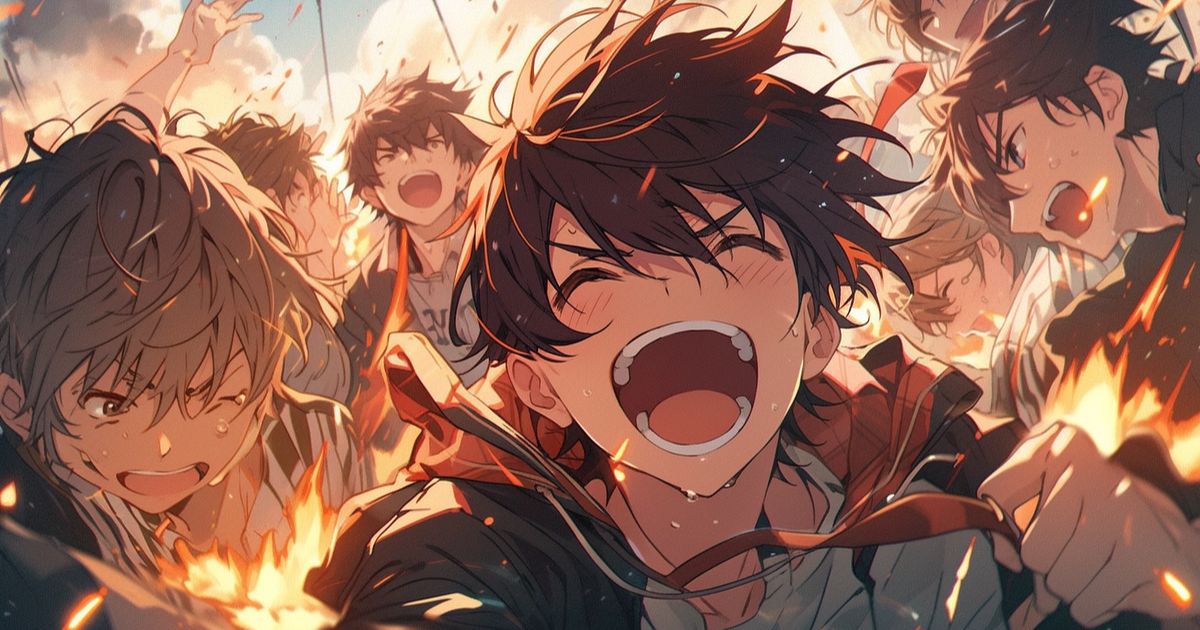In the vibrant realm of Japanese animation, one iconic element stands out: the anime girl. These characters have captured hearts worldwide, becoming synonymous with the medium itself. Let’s embark on a journey through the world of anime girls, exploring the phenomenon of “girl = anime” and its far-reaching impact on global pop culture.
The Evolution of Anime Girls
The concept of “girl = anime” didn’t spring up overnight. It’s the result of decades of artistic evolution and cultural shifts. In the early days of anime, female characters often played supporting roles, but as the medium grew, so did their prominence and complexity.
Historical Origins
Anime girls trace their roots back to the 1960s with characters like Astro Boy’s Uran. However, it was in the 1970s and 1980s that they truly began to shine. Shows like “Cutie Honey” and “Sailor Moon” put female leads front and center, paving the way for the diverse array of anime girls we see today.
Iconic Characters Through the Decades
Let’s take a walk down memory lane with some unforgettable anime girls:
- 1970s: Honey Kisaragi (Cutie Honey)
- 1980s: Lum Invader (Urusei Yatsura)
- 1990s: Sailor Moon (Sailor Moon)
- 2000s: Haruhi Suzumiya (The Melancholy of Haruhi Suzumiya)
- 2010s: Mikasa Ackerman (Attack on Titan)
Each of these characters left an indelible mark on the “girl = anime” landscape, influencing countless designs and stories that followed.
Shifting Art Styles and Character Designs
The visual representation of anime girls has undergone significant changes over the years. Early designs were often simple and cute, but as techniques improved and audiences matured, more diverse and complex styles emerged. Today, the “girl = anime” aesthetic ranges from hyper-realistic to highly stylized, catering to a wide spectrum of tastes and genres.
Read This Post: Retro Bowl Unblocked Games 66
Archetypes and Tropes
When we dive into the world of anime girls, we encounter a fascinating array of character types. These archetypes have become so ingrained in the medium that they’ve spawned countless memes and discussions around the “girl = anime” phenomenon.
Common Anime Girl Personality Types
- Tsundere: Hot-tempered on the outside, caring on the inside
- Yandere: Sweet and loving, but dangerously obsessive
- Kuudere: Cool and calm, with hidden depths of emotion
- Dandere: Shy and quiet, opening up to select people
- Genki Girl: Energetic and optimistic, always ready for adventure
These personality types often come with specific visual cues, creating a shorthand that anime fans instantly recognize.
Visual Cues and Design Elements
Anime girls are often identifiable by certain visual traits:
| Hair Color | Eye Color | Common Personality Association |
| Pink | Blue | Sweet and cheerful |
| Blue | Red | Cool and mysterious |
| Blonde | Green | Energetic and outgoing |
| Purple | Purple | Mature and sophisticated |
These design choices aren’t just aesthetic; they often hint at a character’s personality and role in the story.
Subverting Expectations: Breaking the Mold
While archetypes are common, many modern anime girls break free from these constraints. Shows like “Puella Magi Madoka Magica” have turned traditional magical girl tropes on their head, offering complex, multifaceted characters that defy easy categorization.
Cultural Impact
The “girl = anime” phenomenon has transcended its origins, becoming a global cultural force.
Anime Girls in Global Pop Culture
From Gwen Stefani’s “Harajuku Girls” to the influence of anime aesthetics in Western cartoons like “The Powerpuff Girls,” the impact of anime girls is undeniable. They’ve become cultural ambassadors, introducing millions to Japanese pop culture.
Influence on Fashion and Cosplay
The distinctive styles of anime girls have inspired real-world fashion trends. Harajuku fashion, for instance, often draws inspiration from anime aesthetics. Cosplay, too, has become a global phenomenon, with fans meticulously recreating their favorite anime girl looks at conventions worldwide.
Controversies and Criticisms
It’s important to note that the “girl = anime” concept isn’t without its critics. Some argue that certain portrayals of anime girls perpetuate harmful stereotypes or unrealistic body standards. Others point out the potential for objectification in some anime genres. These discussions highlight the complex relationship between anime and its audience.
The Psychology Behind Anime Girls
What makes anime girls so captivating? The answer lies in a complex interplay of psychology and storytelling.
Appeal to Different Demographics
Anime girls aren’t just for male audiences. Characters like the strong-willed Mikasa Ackerman from “Attack on Titan” or the relatable Ochaco Uraraka from “My Hero Academia” appeal to viewers across genders and ages. The diversity of anime girl characters ensures there’s someone for everyone to connect with.
Escapism and Fantasy Fulfillment
For many, anime girls represent an idealized form of femininity or a window into fantastical worlds. The exaggerated emotions and dramatic storylines common in anime provide a form of escapism, allowing viewers to experience a range of feelings through these characters.
Emotional Connection with Fictional Characters
The phenomenon of forming strong emotional bonds with fictional characters, sometimes called “parasocial relationships,” is particularly prevalent in anime. The depth and complexity of many anime girl characters allow viewers to form strong attachments, leading to the popular concept of “waifus” in otaku culture.
Anime Girls in Different Genres
The versatility of anime girls is evident in their presence across various genres:
- Shoujo and Magical Girls: Series like “Cardcaptor Sakura” showcase young girls with magical powers, often dealing with themes of friendship and personal growth.
- Action and Adventure Heroines: Characters like Motoko Kusanagi from “Ghost in the Shell” prove that anime girls can be tough, complex action heroes.
- Slice-of-life and Comedy: Shows like “K-On!” feature relatable, everyday anime girls, focusing on friendship and personal challenges.
This diversity demonstrates how the “girl = anime” concept adapts to different storytelling needs and audience preferences.
The Business of Anime Girls
The popularity of anime girls has spawned a massive industry. From figurines and body pillows to themed cafes and virtual reality experiences, the merchandising potential seems limitless. The concept of “waifu” – a favorite female character – drives significant consumer behavior in the anime market.
“Anime girls are not just characters; they’re cultural icons and economic powerhouses.” – Anime Industry Analyst
Creating Anime Girls
The process of bringing an anime girl to life is a collaborative effort involving character designers, animators, writers, and voice actors. Each element, from the subtle nuances of facial expressions to the distinctive vocal quirks, contributes to creating memorable characters that resonate with audiences.
The Future of Anime Girls
As we look ahead, the world of anime girls continues to evolve. We’re seeing more diverse representations, both in terms of character design and personality types. Technological advancements like VR and AI are opening up new possibilities for interaction with these beloved characters.
Conclusion
In conclusion, the “girl = anime” phenomenon is a rich, multifaceted aspect of pop culture that continues to captivate audiences worldwide. From their humble beginnings to their current status as global icons, anime girls have come to represent not just a style of animation, but a unique form of storytelling and artistic expression.

